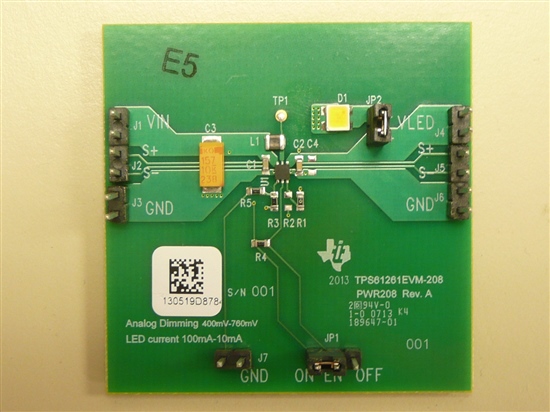Chris Glaser, Applications Engineer at Texas Instruments shares in this recent blog entry three narrow vin circuit methods for LEDs in battery powered applications.
You might have seen this amazing 8-pointed blog before you left for a much needed holiday last month. While I really like Santa’s reindeer, I couldn’t help but think of how many of you felt left out because of your small and narrow Vin range. Wide Vin converters are super nice but if your input range is better controlled, a more optimal lower Vin solution likely exists. Based on your feedback, here are a few dimmable LED driving circuits for those of us operating off of batteries. I hope you enjoy!
1. One-two AA or coin cell applications
Starting small for those of us using 1x AA, 2x AA, or coin cells as our power source and driving single LEDs. Certainly these energy sources don’t reach 80 or 100V, but they do go down to 1V and lower levels which can also be difficult to deal with. Such requirements call for a dedicated LED driver which excels at low Vins. The TPS61261 is my favorite as it is super simple, allows really easy dimming, and delivers a reasonably bright 100mA in the LED. I like this circuit so much that I decided to write about it for my first blog. Check out the EVM: TPS61261EVM-208
 |
|
TPS61261 LED driver for coin cell or AA power sources (LEDinside/Texas Instruments) |
2. single-cell Li-ion battery applications
For those of you operating from a 1-cell Li-ion battery and wanting to be blinded by your LED, the TPS63020 delivers up to 2A to really light up the room. Be sure and wear sunglasses and/or use the dimming features shown here. Being a buck-boost LED driver, there’s nothing to worry about as your battery charges and discharges—the LED current stays regulated the whole time, regardless of the input voltage.
3. Multi-cell battery applications
If you have multi-cell batteries with higher voltages and very dark sunglasses, the TPS62130 is perfect for driving 3A in your LED from up to a 4-cell lithium battery pack. A detailed design guide with circuits for both analog and PWM dimming is here. This IC family also supports lead-acid battery-powered LED drivers, typically found in some solar lanterns.
No matter what your LED driving application, I hope these three circuits assist you in designing your next battery powered LED driver with dimming!





 CN
TW
EN
CN
TW
EN






